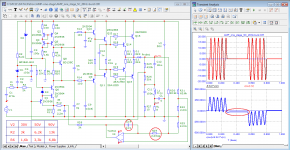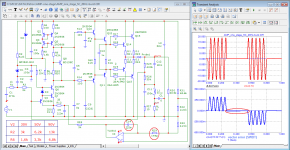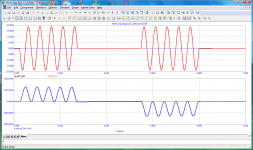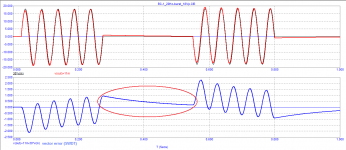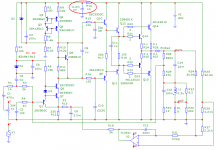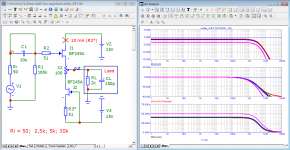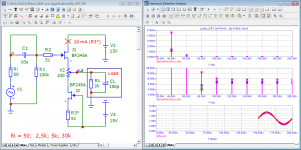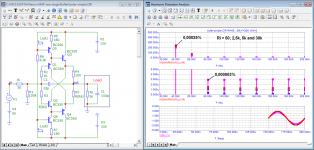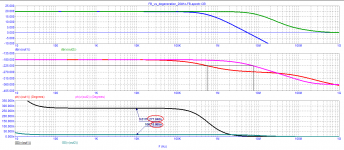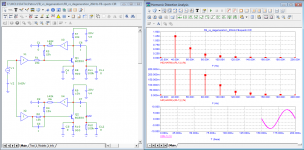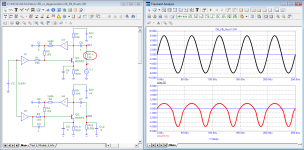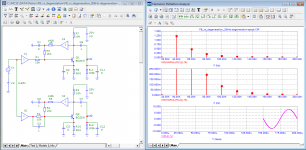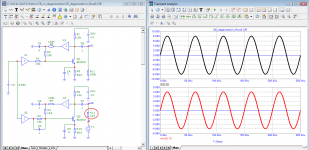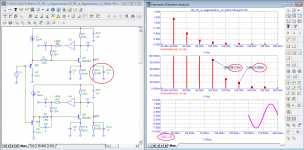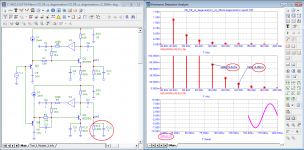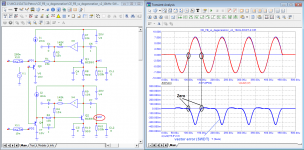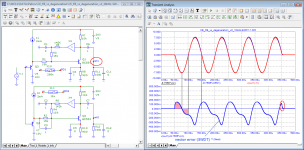In DC amplifiers, there are no problems with amplifying signals in the low-frequency region.
Let's check the operation of the servo control system in this area. To do this, we use signals with a frequency of 20 Hz (burst and rectangular).
According to my concepts, the faster the constant component on the load is restored at the end of the signal and the smaller the slopes of the rectangular signal shelves, the better.
As the test showed, the initially selected values of the capacitor and resistor in the integrator are not optimal.
For comparison, the same test of an amplifier made according to Lin's typical circuit.
Let's check the operation of the servo control system in this area. To do this, we use signals with a frequency of 20 Hz (burst and rectangular).
According to my concepts, the faster the constant component on the load is restored at the end of the signal and the smaller the slopes of the rectangular signal shelves, the better.
As the test showed, the initially selected values of the capacitor and resistor in the integrator are not optimal.
For comparison, the same test of an amplifier made according to Lin's typical circuit.
Attachments
For those who do not want to mess with JFET transistors, I can offer this buffer option.
If the volume control is turned on in front of the buffer, then even with a potentiometer with a resistance of 120 kOhm, the resistance of the signal source will not exceed 30 kOhm.
If the volume control is turned on in front of the buffer, then even with a potentiometer with a resistance of 120 kOhm, the resistance of the signal source will not exceed 30 kOhm.
Attachments
https://www.diyaudio.com/community/threads/sound-quality-vs-measurements.200865/post-2843826
DF96
«The degeneration myth seems to come from people who like degeneration but who wish to claim (for some purpose) that they don't like/use feedback. Hence all the solid-state threads by people offering 'zero feedback' designs which abound in emitter followers. I used to point out their mistake, then I laughed at them, now I ignore them.»
For an experiment, take a simple cascade with OE and test it in two modes.
The OE cascade bandwing band is much wider, the time delay time is more than an order of magnitude lower than with a parallel feedback, idle distortion is comparable, the output resistance with a parallel feedback below, but it is very crooked.
DF96
«The degeneration myth seems to come from people who like degeneration but who wish to claim (for some purpose) that they don't like/use feedback. Hence all the solid-state threads by people offering 'zero feedback' designs which abound in emitter followers. I used to point out their mistake, then I laughed at them, now I ignore them.»
For an experiment, take a simple cascade with OE and test it in two modes.
The OE cascade bandwing band is much wider, the time delay time is more than an order of magnitude lower than with a parallel feedback, idle distortion is comparable, the output resistance with a parallel feedback below, but it is very crooked.
Attachments
strange, but no one laughs at the products of Ayre, the founder and ideologist of which is Charlie Hansen (1956-2017).DF96
«... Hence all the solid-state threads by people offering 'zero feedback' designs which abound in emitter followers. I used to point out their mistake, then I laughed at them, now I ignore them.»
- Home
- Amplifiers
- Pass Labs
- Single stage amplifier
